M12 Preview Week: A Look at Intro Pack Foil Rares
Intro packs have been a staple of Magic The Gathering since the Tempest block, and a feature of all Core Sets since 7th Edition. These decks are exactly what they claim to be: An excellent introduction to the mechanics and strategies of Magic. I highly recommend them for anyone who is new to the game.
The great thing about the M12 Intro Packs in particular is that they look to be two-color decks centered on strategies that are typical of their component colors. Each core set is meant to return to the roots of the Magic “color pie” – the theory by which mechanics, abilities, and creature types are aligned with the five colors of mana. While the decklists for the M12 Intro Packs have yet to be released, we do have for you a quick rundown of the foil rares that will be the headliners of their respective decks.
Let’s check them out:
Anyone who is new to Magic The Gathering has undoubtedly discovered that there is a plethora of “slang” that you have to get used to. One such bit of lingo that is important to today’s post is “on a stick”. When a card is referred to as being another card “on a stick”, it means that it is a creature, artifact, etc. that has an ability that is the same as a previously printed instant or sorcery.
This term sprang from the ability of Isochron Scepter
Isochron Scepter to repeatedly copy the instant that it had imprinted. Of course over the long history of Magic this has become a favorite source of inspiration for developers. Kamahl, Fist of Krosa
Kamahl, Fist of Krosa is Overrun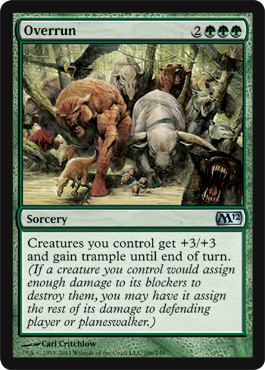
Overrun on a stick, Shriekmaw
Shriekmaw is Terror
Terror on a stick, and the Magus series were various lands, enchantments, and other spells on a stick.
Why is it important to know this term for our discussion of the M12 Intro Packs? Because, if you look closely, each of these heavy-hitting creatures (almost) has an ability that repeats the effect of a previously printed spell.
Let’s start by looking at Flameblast Dragon. He’s the only card in this series that is a reprint, and he very well might be the source of inspiration for the creation of the rest of these cards by R&D. For a lot of reasons Red is going to be a really fun color to play in the coming Standard environment, and while Flameblast Dragon certainly isn’t an “auto-include”, he could be a lot of fun in casual play.
Flameblast Dragon is a 5/5 flier for six, which isn’t bad, but his ability is what makes him shine. He’s Blaze
Blaze “on a stick” every time he attacks. Because this optional cost occurs when Flameblast attacks, you can use his Blaze to get a flying creature out of his way before blockers are declared, or, if the skies are clear, nail your opponent for some additional burn damage. If you’ve got six lands or so in play, then Flameblast Dragon is a pretty effective clock. While many creatures have abilities that trigger once they have dealt combat damage, this dragon will be able to lay on the hurt even if there is a significant blocker in his way.
Since Flameblast Dragon is one of only two creatures in this “on a stick” cycle that has a repeatable ability, I think we’ll find that he’s one of the most powerful.
Guardian Angel
Aegis Angel is also a 5/5 flier for six, and her comes into play ability makes another permanent indestructible as long as you control her. This makes her Indestructibility
Indestructibility, last seen in M10, on a stick. Just as a side note, I have to say that Aegis Angel probably has my favorite art of any of this series. I really feel like the artists that Wizards uses pull out all the stops when it comes to angels and I’m glad to see that trend continue.
It’s interesting that her text stipulates that her effect ends when you lose control of her and not when she “dies” (a new official term for M12). This means that Act of Aggression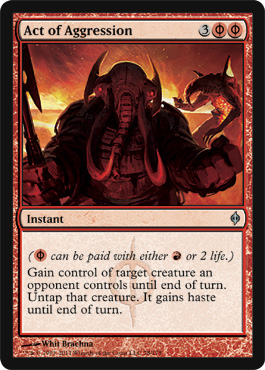
Act of Aggression, Act of Treason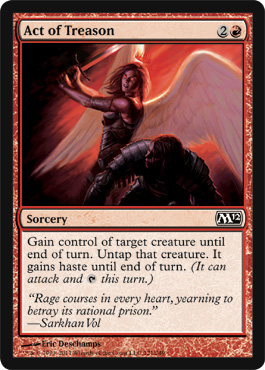
Act of Treason, and the entire “Political Puppets” control suite can remove the indestructibility she gives merely by bringing her over to their side of the board. Is this a significant drawback? Probably not, but it does provide casual players a fun way to manipulate their meta-game against their buddies who will love using her to secure elements of their favorite combo.
Where there are angels…
…there are demons. At least that seems to be the way of things from creative writing and fantasy from Milton forward. It is certainly true in the world of Magic, especially in the “Heavenly Inferno” commander deck, which we highly recommend.
Rune-Scarred Demon is a serious late-game bomb. For an additional generic mana beyond the cost of Flameblast and Aegis, you’ll get a 6/6 flier that casts Demonic Tutor
Demonic Tutor as he comes into play. Not only is Rune-Scarred Demon a serious aerial threat, but the ability to search your library for ANY card ensures that he will be a game ender.
Tutor cards (cards that allow you to search your library) have always been considered extremely powerful (and are prone to banning), but attaching a tutor to a beatstick like the demon is a great innovation on the old formula. His tutoring will make is so you can find exactly the answer you need to whatever your opponent is up to, even if it is just the extra pump necessary to allow you to swing with the demon for lethal damage.
While I think Flameblast Dragon probably will probably find a home in a lot of casual decks, I think Rune-Scarred Demon might win the prize for having the most powerful spell attached to him – a spell which we haven’t seen since the Divine vs. Demonic Duel Deck, and before that not since Revised.
If Rune-Scarred Demon has the most powerful ability, then I would say that Arachnus Spinner has the most fun ability – depending on your perspective. If you’re the one slinging webs, then I think Arachnus Spinner will be a lot of fun, but if you’re experiencing the pain of having your creatures bogged down by Aragog’s big brother, then frustration will follow.
Before I discuss Arachnus Spinner’s ability, let me just remark that it’s interesting that R&D chose “spider” as an emblematic creature type for Green, but I like the way this is going. We’ll see if spiders become a viable tribe in Innistrad or not.
Arachnus Spinner is unique among the five cards we’re discussing today for a number of reasons. First of all, he is not any specific spell “on a stick”, though he is reminiscent of both the Squadron Hawk-find your playset type of ability and the Spirit of the Night-minions bring out big-bad series. He searches your library and graveyard (awesome) for webs in which to capture your opponents most powerful or irritating creatures.
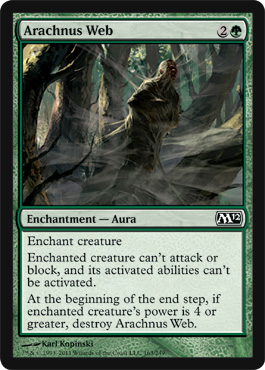 Arachnus Web itself has an effect similar to many White Pascifism-esque spells, most notably Arrest
Arachnus Web itself has an effect similar to many White Pascifism-esque spells, most notably Arrest
Arrest. It has the limitation of only being able to restrain creatures with power less than four. This is a great choice flavor-wise, as it recognizes that a big enough creature would be able to rip through the webs without too much delay.
The great thing about Arachnus Spinner is that he allows you to renew your webs every turn. Even if your opponent is able to disenchant the Web, as long as you have spiders to tap it will keep returning from the graveyard ad infinitum. This will not only thin your library, but will provide you with card advantage.
Because flavor is my most-beloved aspect of card design in Magic, I think that Arachnus Spinner may be my personal favorite among the five Intro Pack rares. He’s big, he’s tough, and he’s got a unique ability that shows an incredible amount of thoughtful designing on the part of Wizards.
Finally, it’s interesting to note that while the other four cards we’re discussing here have flying, Arachnus Spinner has reach and a toughness of 7, making him the only one of the five able to survive combat with ANY of the others. Pretty snazzy.
Decisions, Decisions…
Last, but not least, we have the blue offering for the M12 Intro Packs, Spinx of Uthuun.
Personally, I’ve really been pleased to see Sphinxes emerge as the newest Blue fatties, a category in which the color was distinctly lacking. Previously Blue struggled with larger creatures, relying on big clunky leviathans and sea serpents that typically were over-priced and had attacking restrictions.
Sphinxes provide Blue with air support that can combat Red’s dragons, White’s angels, and Black’s demons, in addition to bolstering Blue’s arsenal of library and hand manipulation effects. The Sphinx of Uthuun brings back an old favorite: Fact or Fiction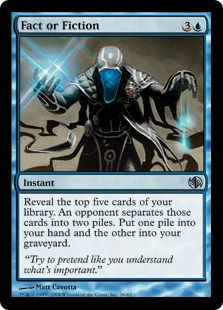
Fact or Fiction, a four-cost instant that allowed you to draw three or four cards, depending on how your opponent stacked the piles.
Card advantage has been looked on for quite some time as a significant factoring in determining the outcome of games, and the Sphinx provides you not only with significant draw, but also with a flier that will demand an answer from your opponent. He’ll survive combat with both the Flameblast Dragon and the Aegis Angel, though he’ll meet his match in Rune-Scarred Demon and be frustrated by Aranchus Spinner.
The thing I love most about Sphinx of Uthuun’s ability is that it puts my opponent’s fate into his own hands. I’ve never seen Fact or Fiction work out perfectly for the opposing player, and I’ve often seen that look of dismay which indicates a choice between “bad and worse”.
The biggest decision though, is which Intro Pack are you going to pick? We’ll have the decklists up on our blog for you as soon as they are available, and if these foil rares are any indication of the contents of the decks, then I think we can expect big things from this round of preconstructed decks.
Leave us a comment and let us know which card you’re most looking forward to playing.
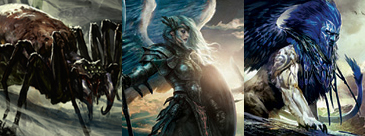
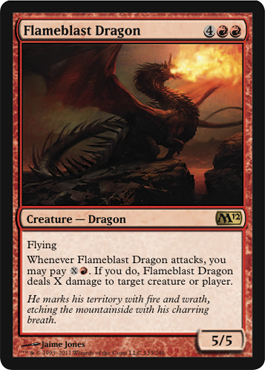
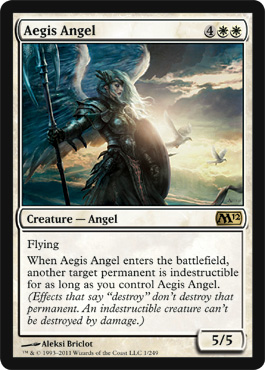
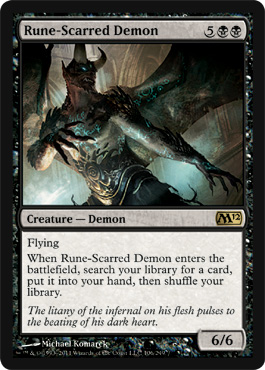
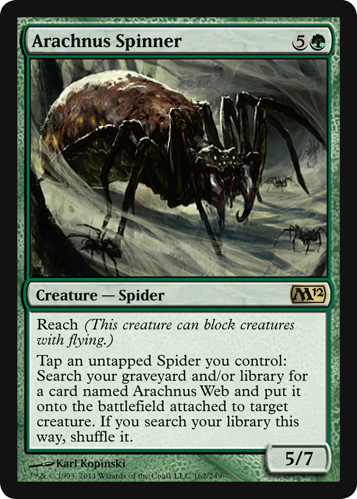
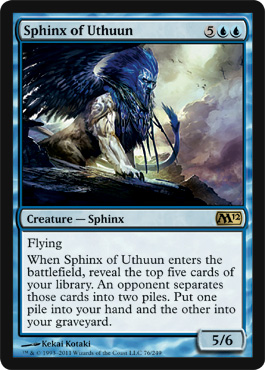
Leave a Reply